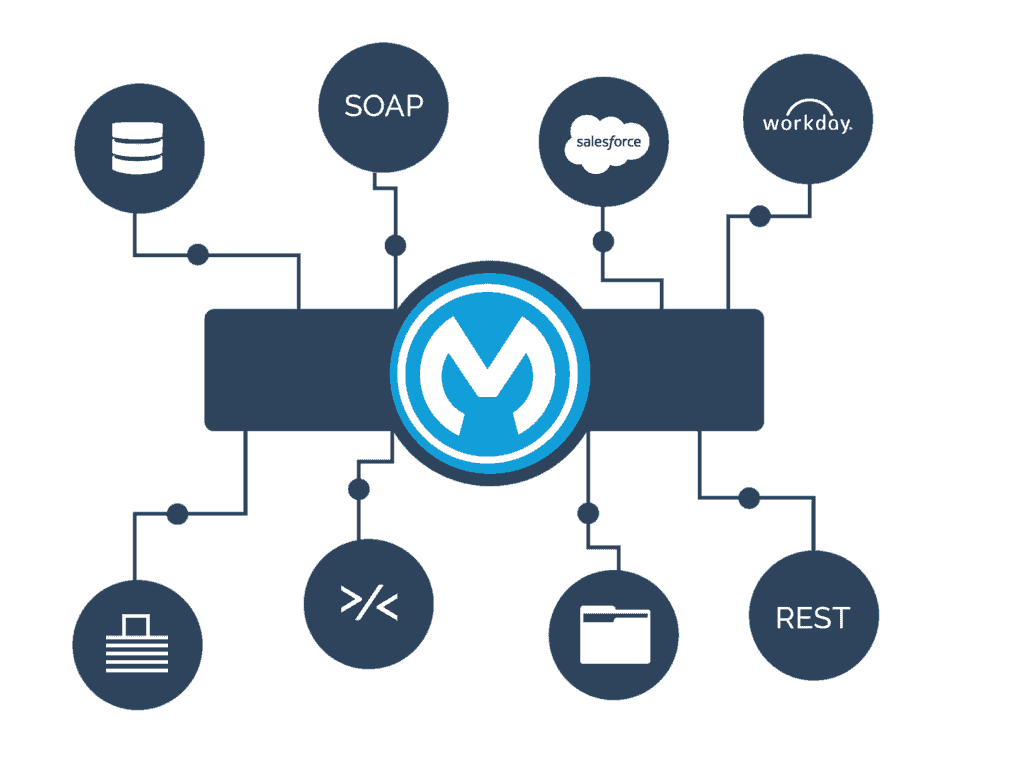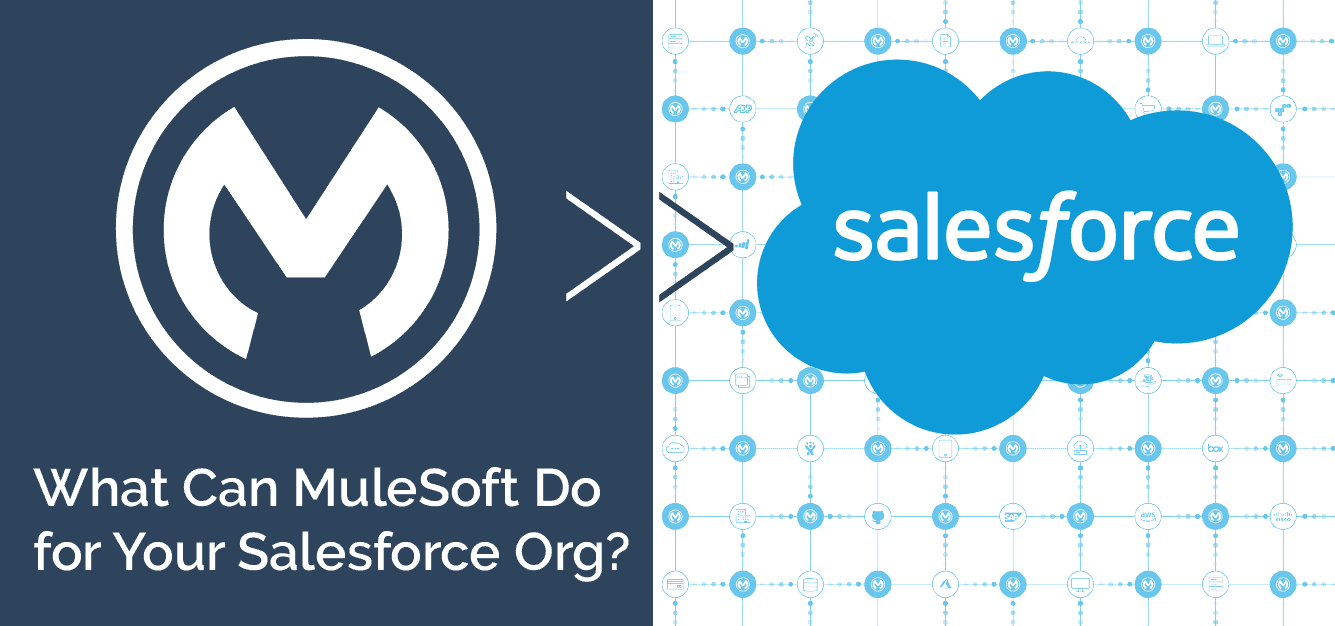What Can MuleSoft Do for Your Salesforce Org?
Estimated reading time: 6 minutes
Integration is the future. In an increasingly technology-driven world, it is crucial that there is a single source of truth for your company’s information. If your employees must go to multiple different places to get the information they need, you have wasted time, money, and energy.
Salesforce® and MuleSoft® can create a powerful, real-time integrated experience in your Salesforce org. This article will explain what it means to have an integrated experience in your Salesforce org and how to acquire that experience with MuleSoft. In addition, we will cover some of the basic integration tools in Salesforce, a high-level overview of MuleSoft architecture and how these tools work together.
Salesforce Integration Tools for MuleSoft
Salesforce is built to be integrated with your legacy systems to create a 360 degree view of your customers for your Salesforce users. MuleSoft can be added to your Salesforce org by adding a Connected App in the App Manager settings.
The best way to allow MuleSoft to have access to your Salesforce org is by creating an integration user. When the user is set up, save the username, password, and security token that is sent to the related email. These credentials will be used in MuleSoft to login to Salesforce and make changes to the data via the Salesforce REST API.
Salesforce can communicate changes to the data to MuleSoft in a few different ways. The most common and simple way being via Platform Events and Process Builders. A Platform Event can be created in Salesforce and triggered to send a message to MuleSoft via a Process Builder. In this way, you can create the trigger to respond to whatever changes in the data suit your business needs.
In addition, an APEX Class can be configured to use the Salesforce REST API mentioned earlier. An APEX Class is created in the Developer console and is written to receive the request from Salesforce regarding the change in data, then that message is sent to a listener in MuleSoft, similar to the way the first option with Platform Events works. However, it is highly recommended that you use Platform Events and Process Builders because they require significantly less Salesforce Development time and are easier to maintain in the long run.
MuleSoft Architecture – How Does it Work?
MuleSoft architecture is unique from other integration platforms because it is an Enterprise Service Bus architecture model. This means that MuleSoft is the translator between many different systems. You can create APIs unique to your systems that only change when that system changes. Then, these system APIs speak to each other through MuleSoft processing APIs. As you can see in the diagram below, systems do not connect directly to each other. Rather, they are connected through MuleSoft.

In MuleSoft, there are three kinds of APIs that are created:
- Experience API (Channels): Produces what the end user needs to see and interact with.
- Process API (Processes): Performs the transformations between systems.
- Translates each of the systems to Salesforce or other systems that need to communicate.
- System API (Data): Represents what is held in each system.
Below is an example of how these APIs can be structured:

As you can see, the system layer represents the two systems that need to be integrated. These system API’s do not contain any of the business logic to “translate” Salesforce to the ERP system. The process layer APIs contain the business logic for Products, Orders, and Customers so that this data can be translated from one system to another. The top layer, Experience APIs, create what the end users interact with. These APIs generally contain schedules for when the other API’s should run in order for the data to move from system to system.
This kind of architecture creates many significant benefits to integrating with MuleSoft. To start, it creates reusable, scalable, and secure integrations. Once you have created a System API, you do not need to ever create it again. You may need to make small additions, but you will be able to connect that system to any other system via a Process API by reusing the System API. This leads to increased agility on projects, less time wasted, and more money saved. Similar to the App Exchange, there is an Anypoint Exchange for MuleSoft. Here you can find connectors, accelerators, integration patterns, etc., that you can use in your projects instead of starting from scratch yourself.
Salesforce + MuleSoft: Catalyze Your integrated Experience

The combination of Salesforce integration tools and MuleSoft can create the integrated experience you’ve been looking for in your Salesforce org. It can be difficult to fully transition from legacy systems to Salesforce and with MuleSoft you can implement Salesforce at your own pace. This will allow you to slowly retire your legacy system operations while keeping your data up to date in real time and creating a future-proof implementation. MuleSoft can be updated in an extremely agile manner to keep your systems up-to-date and avoid technical debt build up.
With a MuleSoft integrated experience, your Salesforce users will be able to see the data they need in one place. This will create an increased level of trust in your Salesforce org from the start and make the transition away from legacy systems as painless as possible. The future is integrated and MuleSoft can take you there.
As a certified MuleSoft Anypoint and Salesforce multi-cloud consulting partner, Ad Victoriam’s integration experts understand the complexities of enterprise integrations, both on-premise and in the cloud. We simplify complex integration scenarios, integrate disparate systems, and provide a scalable architecture that your business can grow with – whether or not you are using Salesforce. So, if you are ready to connect your systems, we’re ready to talk to you today.
*This article also appears on Salesforce Ben
Related Articles
YANMAR Returns for a MuleSoft Integration


